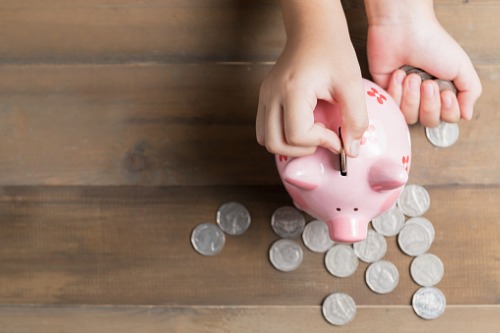RBC poll shows more Canadians now have TFSAs than RRSPs but are missing out on true benefits

A decade on from the launch of Tax-Free Savings Accounts (TFSAs), their true capabilities are being missed by millions of Canadians.
That’s the message from RBC which says that the accounts are largely used as convenient storage for savings rather than being recognised as an investment super-power for retirement funds.
The 2019 RBC Financial Independence in Retirement Poll reveals that investors are missing out on the tax-free returns of TFSAs by not investing those funds to help them grow.
It shows that 57% of respondents have TFSAs compared to 52% who have Registered Retirement Savings Plans (RRSPs), the first time RBC’s polling has shown a greater share of TFSAs.
"Canadians are drawn to the flexibility of saving cash in their TFSAs, but it shouldn't stop there. The true advantage of contributing money to your TFSA is to help you reach your goals, not just to have a short-term savings account," advised Stuart Gray, Director, Financial Planning Centre of Expertise, RBC. "The magic happens when you invest the money within your TFSA and gain the benefit of compounding, which helps your earnings generate even more earnings. You gain interest not only on your original investment, but also interest on your interest."
Preferred option for 55+
Over 55s, who have traditionally focused on RRSPs now prefer TFSAs and 64% would choose TFSAs over RRSPs if they could only choose one plan.
For all TFSA holders, the top five holdings within their plans include:
- 42% – savings accounts and cash
- 28% – mutual funds
- 19% – stocks
- 15% – GICs/term deposits
- 7% – ETFs (exchange-traded funds)
Gray says the use of TFSAs as piggy banks rather than investments is not helped by their name; savings account does not necessarily inspire thoughts of investment.
Although 74% of poll respondents did know that TFSAs can contain cash and investments, 4 in 10 did not make the connection with growing wealth.
"Income earned on what you hold within your TFSA is not taxed, so the compounding occurs for the full amount. You can invest in a variety of investments to help you maximize your tax-free return, to help you reach your financial goals,” he said.
Withdrawing from TFSAs
Almost two thirds reported that they have not withdrawn funds from their TFSA but among the 35% who have the top reasons were:
- Paying off debt – 25%
- Making a large or special purchase – 24%
- An emergency – 20%
- Paying day-to-day expenses – 19%
- Purchasing something for a home – 11%
- Buying a home – 10%
|
TFSAs vs. RRSPs |
National |
18-34 |
35-54 |
55+ |
Male |
Female |
|
Yes – I have a TFSA |
57% |
52% |
51% |
65% |
58% |
55% |
|
Yes – I have an RRSP |
52% |
40% |
62% |
52% |
55% |
49% |
|
Prefer TFSAs over RRSPs |
50% |
43% |
41% |
64% |
52% |
49% |
|
Estimated current |
National |
18-34 |
35-54 |
55+ |
Male |
Female |
|
My TFSA |
$42,300 |
$33,300 |
$36,300 |
$51,500 |
$48,100 |
$36,500 |
|
My RRSP |
$96,367 |
$47,066 |
$80,612 |
$139,870 |
$108,299 |
$83,614 |
|
Top 5 holdings in TFSAs |
National |
18-34 |
35-54 |
55+ |
Male |
Female |
|
Savings accounts & cash |
42% |
50% |
42% |
37% |
40% |
43% |
|
Mutual funds |
28% |
30% |
26% |
27% |
31% |
24% |
|
Stocks |
19% |
22% |
17% |
20% |
28% |
11% |
|
GICs or term deposits |
15% |
11% |
11% |
20% |
16% |
14% |
|
ETFs (Exchange-traded |
7% |
8% |
6% |
7% |
10% |
4% |
|
Bonds |
6% |
7% |
4% |
6% |
8% |
3% |
|
Top reasons for using a |
National |
18-34 |
35-54 |
55+ |
Male |
Female |
|
Saving for my retirement |
38% |
30% |
41% |
40% |
41% |
35% |
|
Saving for an emergency |
35% |
39% |
34% |
33% |
33% |
37% |
|
Shelter savings from taxes |
32% |
20% |
26% |
42% |
33% |
30% |
|
Everyday savings |
25% |
36% |
22% |
20% |
24% |
25% |
|
Greater withdrawal flexibility |
14% |
12% |
11% |
18% |
15% |
13% |
|
Saving for large/special |
14% |
23% |
13% |
9% |
12% |
16% |
|
Saving to purchase a home |
10% |
27% |
6% |
2% |
8% |
12% |
|
Saving to renovate my home |
9% |
12% |
8% |
6% |
10% |
7% |



